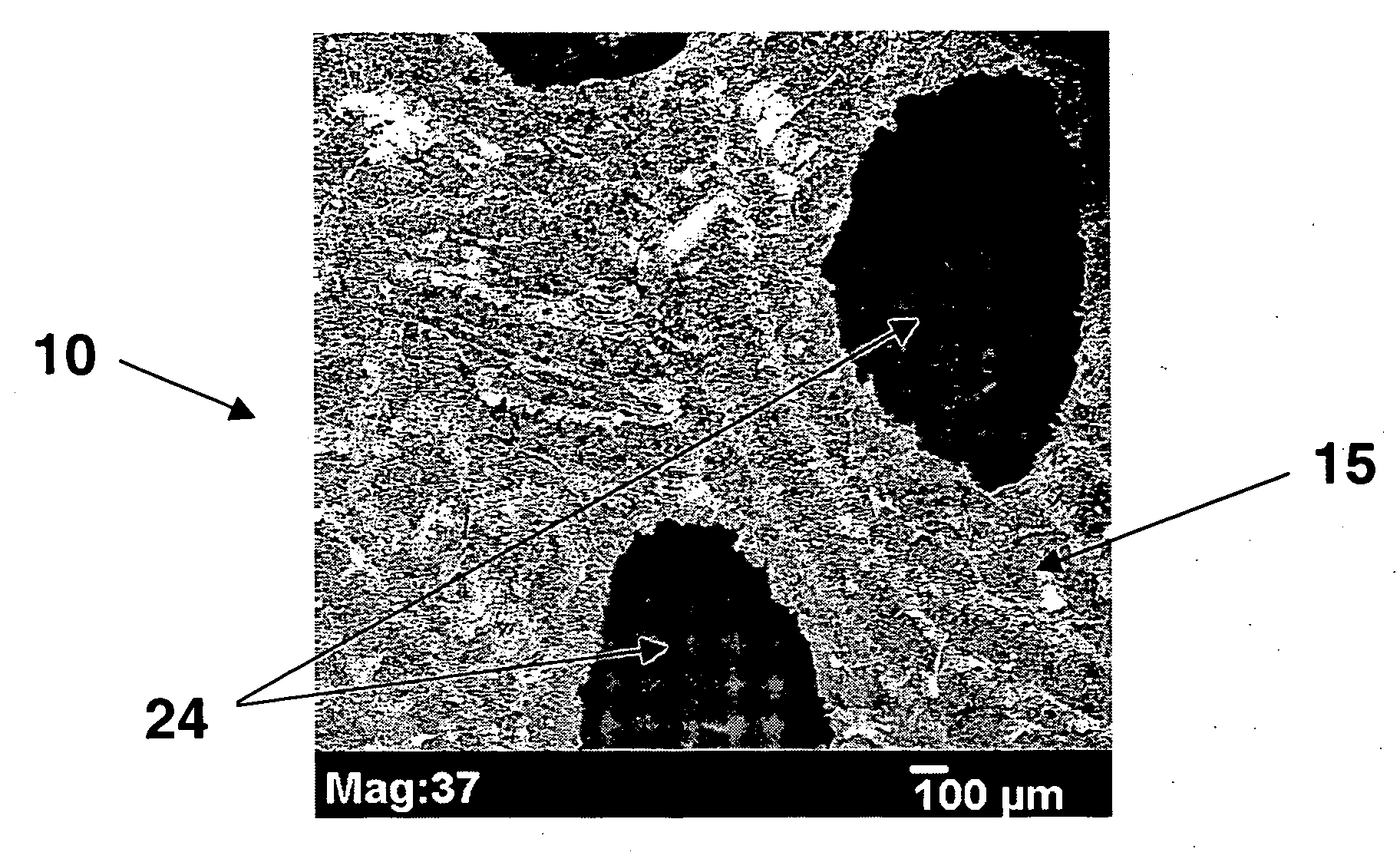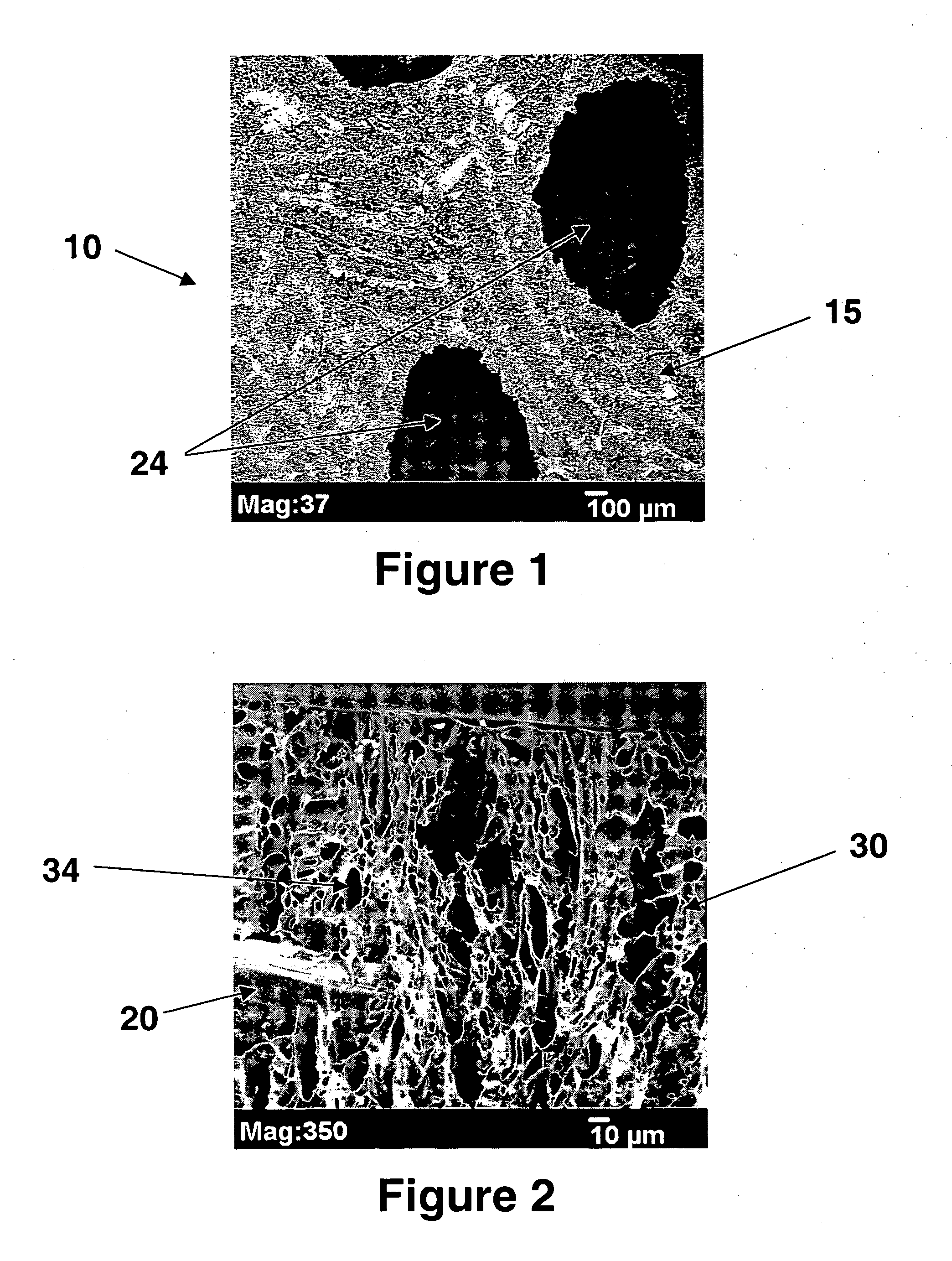Device for tissue reinforcement having microporous and macroporous structures
a tissue reinforcement and micro-porous technology, applied in the field of tissue reinforcement devices, can solve the problems of vesicovaginal fascia injury, herniation of the bladder, and inconvenient reattachment or tying of tissue layers together, and achieve the effects of facilitating tissue regeneration, enhancing tissue repair, and eliminating or reducing potential scar contraction and formation
- Summary
- Abstract
- Description
- Claims
- Application Information
AI Technical Summary
Benefits of technology
Problems solved by technology
Method used
Image
Examples
example 1
Formation of Tissue Reinforcement Device
[0046]A 10 weight percent solution of epsilon-caprolactone / glycolide copolymer in 1,4-dioxane was prepared as follows. 20.1 grams of 36 / 64 poly(epsilon-caprolactone-glycolic acid) copolymer (PCGA), obtained from American Polymer Incorporation (American Polymer Inc., Birmingham, Ala.), was added to 180 grams of 1,4-dioxane (Fisher Scientific, Raritan, N.J.) in a 250 milliliter Erlenmeyer screwed cap flask. The mixture was stirred for 4 hours in 60° C. water bath set on a temperature controlled heating plate. The polymer solution was filtered through an extra coarse thimble filter to remove any non-dissolved solids. This 10 weight percent solution was diluted to 5 weight percent by mixing 75.0 grams of 10 percent solution with 75.2 grams of 1,4-dioxane (Fisher Scientific, Raritan, N.J.).
[0047]A 3 weight percent solution was prepared by diluting 18.1 grams of 5 weight percent solution with 12.2 grams of 1,4-dioxane (Fisher Scientific, Raritan, N....
example 2
SEM Evaluation
[0050]Samples of the tissue reinforcement device made in Example 1 were mounted on a microscope stud and coated with a thin layer of gold using a EMS 550 sputter coater. SEM analysis was performed using the JEOL JSM-5900LV SEM. The surfaces and cross-sectional areas were examined for each sample. FIGS. 1 and 2 shows tissue reinforcement device 10 where the individual components 20 of the macroporous structure 15 of the device 10 are polypropylene fibers. The fibers are coated with foam coating 30. Device 10 has macropores 24 and micropores 34 in coating 30.
example 3
Cell Attachment
[0051]Human fibroblasts were used for this experiment. Five samples of the tissue reinforcement device made in Example 1 were additionally coated with human fibroblast cells. As a control, five samples of polypropylene mesh were also coated with human fibroblast cells. The number of cells attached to the devices after overnight incubation were measured using a CyQuant kit from Molecular Probe Inc. A higher level of fluorescence indicates a higher level of cell attachment.
[0052]The tissue reinforcement device made in Example 1 had a fluorescence of 643.6+ / −333.6, while the fluorescence of the polypropylene mesh control was 174.6+ / −44.8. The mesh with individual fibers coated with polymer foam showed enhanced cell attachment.
PUM
| Property | Measurement | Unit |
|---|---|---|
| pores sizes | aaaaa | aaaaa |
| pores sizes | aaaaa | aaaaa |
| pore size | aaaaa | aaaaa |
Abstract
Description
Claims
Application Information
 Login to View More
Login to View More - R&D
- Intellectual Property
- Life Sciences
- Materials
- Tech Scout
- Unparalleled Data Quality
- Higher Quality Content
- 60% Fewer Hallucinations
Browse by: Latest US Patents, China's latest patents, Technical Efficacy Thesaurus, Application Domain, Technology Topic, Popular Technical Reports.
© 2025 PatSnap. All rights reserved.Legal|Privacy policy|Modern Slavery Act Transparency Statement|Sitemap|About US| Contact US: help@patsnap.com


